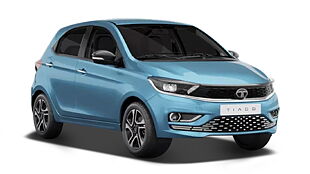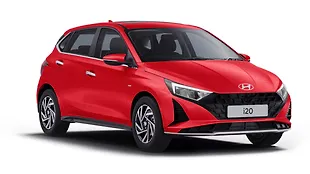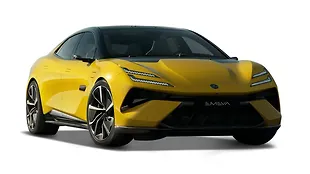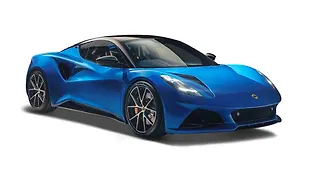Michelin Experience Drive

“Can worn out tyres still retain their braking performance in wet surfaces?” – This was the question we were looking answers for when we arrived at the WABCO Proving Grounds in Chennai. Michelin India had invited us to try out their newest range of passenger vehicle tyres which they claim to be a better performer than the direct rival even when it is in worn-out condition.

Called the Energy XM2+, which is a successor to the proven XM2 tyre range, claims to have up to 3.3 metres of shorter braking distance in wet road conditions as compared to its rival even at the end of its life. This ‘forever new tyre’ – as Michelin likes to call it – is claimed to have a longer life while promising consistent performance even in worn-out conditions. In the presentation, we saw an impressive claim of 1.25 lakhs kilometres performance life for the XM2+, while the mileage is claimed to be 29 per cent better than the rival.

The new rubber formulation of the XM2+ makes use of full-silica rubber compound with strong link of filler molecular bond which minimises the wear rate. Also, there’s something called Alternate Bridge Technology which ensures lesser shuffling in tread block, resulting in lower wear, reduced rolling resistance and increased fuel efficiency.

So to prove this point, Michelin took two identical units of Maruti Suzuki Swift and shod them with equally worn-out pair of tyres. One Swift was wearing Michelin XM2+ while the other one was running on its direct competitor – the Bridgestone B290. Both tyres were worn out in controlled laboratory conditions until their replacement markers were seen and were set at identical pressure and testing conditions. Then we were allowed to take turns and see the difference in performance between the two when accelerating from standstill to 100kmph, and then braking back to a standstill on a soaking wet asphalt road.

After a thorough briefing by experts from Applus IDIADA India, it was time to get behind the wheel. Almost immediately the Michelin’s superior grip off the line compared to the competitor tyres on the dry asphalt became evident. There was lesser road noise filtering inside and we were accelerating quicker too. Once on the wet zone, the Michelins continued to offer more confidence behind the wheel with their enhanced grip levels. And finally, when it was time to brake from 100kmph, gathering all my guts I smashed the brake pedal to the floor. And following a dramatic nose dip and some mindboggling deceleration, both the cars stopped without much drama. But we felt that the ABS on the car with competitor tyres was working way harder as compared to the one with Michelins. The jitters sent through the brake pedals were far more controlled in the Michelin car compared to the delirious work done by the brakes on the other car. In the end, for the two runs I did on both the vehicles, the one with the XM2+ tyres was able to grind to a halt much earlier on both the occasions. Although there are various factors involved, we were impressed with the consistency of Michelins in stopping better on every single run no matter who was driving.

Following that, we also got a chance to do a lap around the WABCO track in another Swift wearing brand new XM2+ tyres. This quick and narrow track had a long straight and a sweeping right-hander along with few slow speed corners. Thanks to the crackerjack grip levels, we could carry an additional speed of 30-40kmph over the recommended speed. The car gripped better and held on to the line remarkably. And through the short slalom course at the end of the run, the tyres proved their mettle again with excellent grip and direction changing capability. We didn’t hear any tyre squealing noise inside the cabin either.

In general, all tyres still have enough performance left in them even when they are nearing their life cycle. Because of common misconceptions and lack of knowledge, car owners tend to replace them wasting this residual tyre life. On a contrary, if car owners could start using the tyre life to their max, it is estimated to save around seven million Euros a year in Europe alone, according to an independent study. This new mass-market tyres from Michelin aims to target this problem.

So if you are looking to replace your tyres, we recommend taking a look at the new XM2+ as well. Price-wise, the XM2+ are launched for a starting price of Rs 4,735. There are currently eight sizes available across two rim sizes – R14 and R15. However, around 30 sizes should be available in 2020 ranging from 12-16 inches diameters suitable for all kinds of passenger vehicles including hatchbacks, sedans, SUVs and MUVs.

Pictures by - Kaustubh Gandhi

![Maruti Suzuki Swift [2018-2021] Image Maruti Suzuki Swift [2018-2021] Image](https://imgd.aeplcdn.com/272x153/n/cw/ec/26742/swift-exterior-right-front-three-quarter-2.jpeg?q=80)
![Maruti Suzuki Swift [2018-2021] Right Front Three Quarter Maruti Suzuki Swift [2018-2021] Right Front Three Quarter](https://imgd.aeplcdn.com/199x112/n/cw/ec/26742/swift-exterior-right-front-three-quarter-2.jpeg?q=80)
![Maruti Suzuki Swift [2018-2021] Right Side View Maruti Suzuki Swift [2018-2021] Right Side View](https://imgd.aeplcdn.com/199x112/n/cw/ec/26742/swift-exterior-right-side-view.jpeg?q=80)
![Maruti Suzuki Swift [2018-2021] Right Rear Three Quarter Maruti Suzuki Swift [2018-2021] Right Rear Three Quarter](https://imgd.aeplcdn.com/199x112/n/cw/ec/26742/swift-exterior-right-rear-three-quarter.jpeg?q=80)
![Maruti Suzuki Swift [2018-2021] Dashboard Maruti Suzuki Swift [2018-2021] Dashboard](https://imgd.aeplcdn.com/199x112/n/cw/ec/26742/swift-interior-dashboard.jpeg?q=80)
![Maruti Suzuki Swift [2018-2021] Steering Wheel Maruti Suzuki Swift [2018-2021] Steering Wheel](https://imgd.aeplcdn.com/468x263/n/cw/ec/26742/swift-interior-steering-wheel.jpeg?q=80)


























